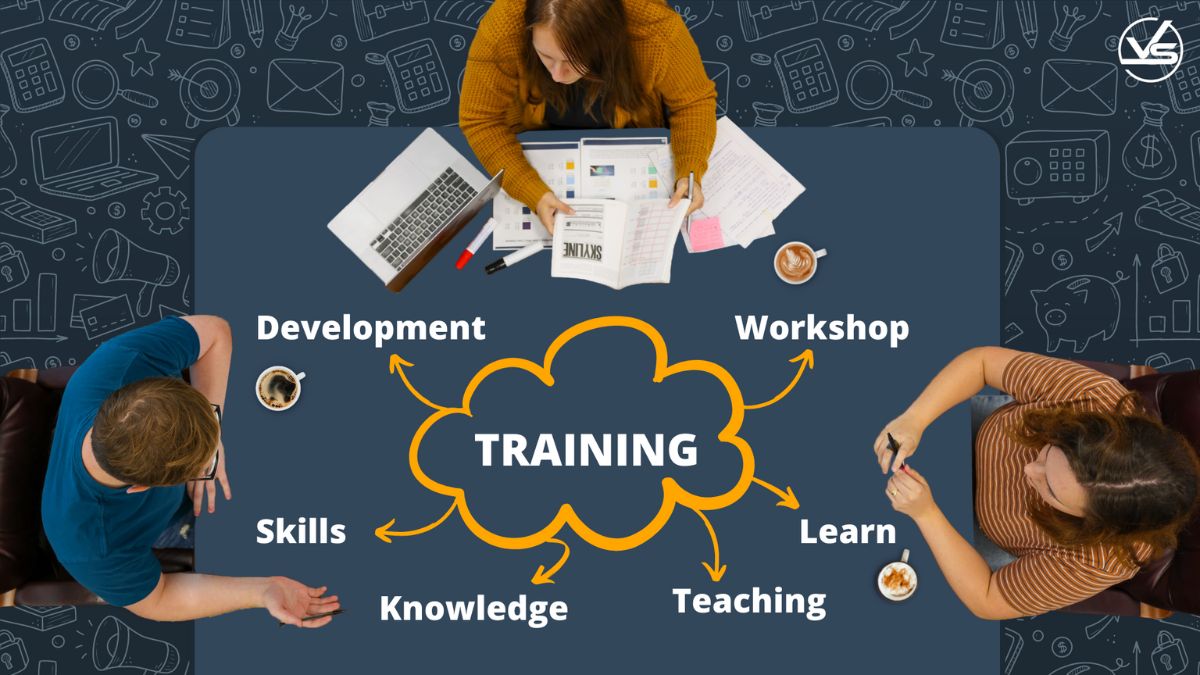
The Strategic Training and Development Process
As the owner of a small or medium-sized business, you've heard it all when it comes to developing business strategy. But are you aware of how to incorporate training and development needs into that process? This article aims to introduce the strategic training and development process and provide information to serve you when incorporating such practices within your firm.
What Is Strategic Training and Development?
If you already have a training and development program, you may wonder what is different about the strategic approach to providing skills to the workforce.
The key difference is that most training programs focus on meeting the individual's training needs, whether it's to improve job performance or personal development. In contrast, strategic training and development (T&D) focuses on meeting the organization's needs and strategic goals.
In other words, the company provides skills training to managers and employees to achieve its mission and goals, improve its overall performance, and gain a competitive edge.
What Does the Strategic Training and Development Process Entail?
The strategic training and development process is similar to that of strategic planning in general. It involves the following:
- Identifying needs
- Evaluating alternatives and initiatives
- Creating actions and key performance indicators
- Assigning to the right audience
- Implementing the plan
- Monitoring progress
- Reevaluating accordingly
The scope, however, is just within the context of training and development needs.
It is helpful to identify the specific talent, department, or organizational needs in granular detail. This process helps you to see the critical categories needed to achieve logistical success. You can then customize the actions based on specific needs.
- Use Business Strategy to Identify Objectives
Since strategic training and development directly contributes to achieving the company's long-term goals, the instruction program should align with the objectives of the company's business strategy.
The aim is to create a strategic training and development program with learning activities to help managers and employees successfully implement the business strategy. That means designing initiatives that align with your mission and values while at the same time supporting the actions needed to achieve organizational goals.
- Identify Strategic Training and Development Initiatives
Strategic simply implies the specific actions you will use to do something more effectively and efficiently. Therefore, initiatives will vary from organization to organization.
However, common initiatives include the following:
- Diversification of knowledge management
- improvement of customer service
- Improvement of retention and expertise
The criteria within each identified training initiative will vary based on the scope and specialty of the firm. For example, engineering firms will have different T&A activities in those areas compared to law firms.
- Determine Strategic Training and Development Actions
The next step is determining the strategic actions needed to carry out the specific initiatives that will achieve the leadership's desired outcomes.
The activities may include actions that tie into the planning, implementation, distribution, and monitoring of training. The activities are customized to fit the specific initiative.
For example, if one initiative is to develop a knowledge management system, the actions needed to support it include primary and sub-elements within the planning, implementation, and monitoring phases.

While T&D focuses on the strategic direction of the business, it also needs to meet the specific training requirements of each individual, depending on skill level and responsibilities.
Managers need to review performance and discuss career opportunities with employees to tailor the training to their individual needs. It is an opportunity to identify potential leaders within the company.
Training methods could include:
- Internal training, such as coaching and job shadowing
- Online and classroom training with a consultancy
- Certificated vocational programs at an educational institution
- Seminars and forums at trade conferences
It's also worth considering whether to use a formal training and development model. There are several models to choose from, each with its advantages and disadvantages. Some examples are as follows:
- Centralized Training Model
- Functional Model
- Matrix Model
- University Model
- Business-Embedded Model
- Monitor Metrics
Key performance indicators allow management to review each initiative's and action's effectiveness (or lack thereof).
Beyond financial performance, metrics effectively monitor and quantify performance in learning, application, and quality.
When choosing metrics, it's critical they align with each specific initiative, action, and timeframe.
For example, with the knowledge management example, tracking metrics related to the specific actions will help management review performance. It will also assist in identifying how much each activity will contribute toward reaching the desired outcome.
Metrics allow management to identify interventions that should occur to adjust performance and inform them whether the actions are on track.
There are numerous ways that data helps improve decisions related to specific initiatives. The key is to…
- Create the right kind of data
- Know how to track the metrics
- Start tracking it
- Know how to review the data
- Do something with the analyzed data
What Are the Benefits of Strategic Training and Development?
While most performance-related training helps improve morale and efficiency, the benefits can be more profound after implementing strategic training and development because it's geared toward ensuring the company's long-term success.
Here are just some examples…
- Achieve Long-Term Growth
Having management and employees aligned in understanding the organization's business objectives, position, and challenges within the market will help improve the organization's competitiveness.
Management will have a better understanding and motivation for achieving performance targets or implementing new policies. In addition, staff will be more understanding and be more inclined to buy into management decisions and organizational changes.
Having management and employees united in working to reach the company's goals will help the company achieve long-term success.
- Enhances Company Performance
Your company will become more competitive when your workforce understands what is expected of them and they have the skills to meet their employment expectations.
Well-trained employees will be more productive. This will help to lower labor costs as employees become more efficient while also serving customer needs more effectively.
Overall, improved competitiveness will help you reach the long-term growth goals outlined in the company's business plan.
- Improves Cooperation
Employees often take pride in their job or team's performance in isolation rather than in how it contributes to the company. Instead of working toward the betterment of the organization as a whole, they become overly focused on their individual performance or the success of their immediate team or department.
Strategic training and development helps employees see how their performance fits within the business strategy and ultimately impacts the company. Understanding the bigger picture will make employees less territorial and more inclined to cooperate with coworkers across the entire organization.
- Improves Quality and Loyalty of Employees
Providing T&D builds employees' skills and makes them aware of opportunities to build a career within the organization through promotion. This will give them the incentive to remain loyal to the company and dedicated to helping it reach long-term growth. In addition, offering a structured training program with a clear path to promotion will make your business more attractive to new, highly qualified applicants.
Strategic training and development will also prepare the workforce for changing demands that implementing the business strategy creates. Employees will be better positioned to fulfill new jobs and responsibilities created within the business as it expands its operations.
- Prepares Future Leaders
When people are not just good at their job but also understand why they are doing it and how it fits in with the bigger picture, they will be better prepared for leadership roles. Not only that, but the focus on review and improvement with T&D helps to build workers' skills and performance over the long run. This, in turn, will allow workers with leadership potential to contribute to the company's success at the highest level.
- Boosts Morale

Strategic training and development helps employees feel they have the skills to perform their job well and have the support of colleagues. This will help boost employees' confidence in their position in the organization.
Confidence, optimism, and job satisfaction all improve team members' morale and, as a result, increase productivity.
Managers will also benefit because improved job performance and reduced turnover and absenteeism will enhance their team's performance goals.
Final Thoughts
Incorporating strategic training and development into your business strategy will prepare your workforce to ensure your company achieves its mission and long-term goals.
It will also help to promote good working practices within the organization and provide employees with more promotional opportunities.
Start with the business strategy to identify training initiatives. Then determine what actions are needed to achieve those goals. Once you have implemented your T&D program, monitor your success and make changes as necessary to ensure your company becomes more competitive and achieves sustainable growth.

